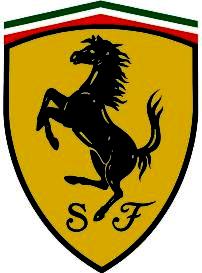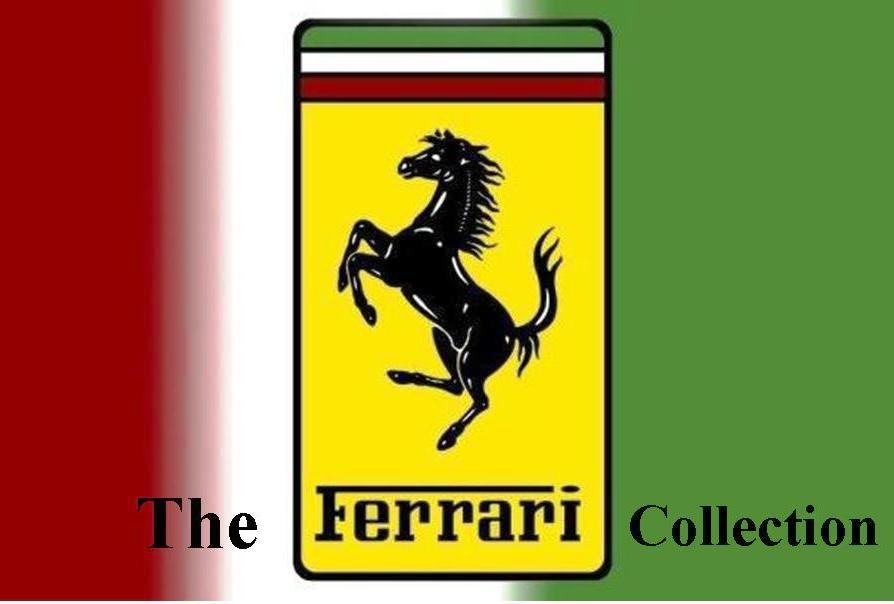
Enzo Ferrari was under pressure in 1968; his love of racing was running the team short of funds, the road car division was having union troubles, Porsche's 917 was the top sports car and the rules governing Group 6 prototypes where changed limiting engine capacity to a maximum of 3Ltr (which meant no Ferrari participation in the 1968 prototype sports car season). It is hard for us to assess which problem was the biggest, or most important to deal with, but as ever Enzo Ferrari was pulling strings and doing deals.
He successfully negotiated a deal with Fiat, which put cash in the coffers and off loaded the union problem to somebody else, then he followed Porsche's lead and moved into the sports car class which had recently had it's engine capacity increased, from 3Ltr to 5Ltr and had the numbers required for homologation reduced from 50 to just 25.
For 1970 Ferrari could enter F1, F2, the FIA’s Group 5 sport cars series (the International Championship for Makes) and the Can-Am series. Mauro Forghieri headed up Ferrari's design team, but he recalls something different in the instructions Enzo Ferrari gave him :-
“Ferrari gave me no technical directive. Instead, there was the imposition to use existing tools for the engine, gearbox, and suspension.”
The team had been considering a prototype car based on the existing 3Ltr F1 engine and built it originally to the 6Ltr sports regulations. When the Porsche 917 hit the circuits Ferrari re-evaluated his plan and reduced it down to 4.993Ltrs. The basic principles were Forghieri's but the real detail work was done by Franco Rocci. This new engine, designated the Type 261, was capable of 560hp at 8.000 rpm from its 60° V12 layout. A Lucas fuel injection system spat fuel into light alloy heads with 11.5:1 compression ratios and carrying 4 valves per cylinder operated by twin overhead camshafts for each bank. With the addition of a light alloy cylinder block, and some development work by Giancarlo Bussi, the engine's output was raised to a peak of 620 bhp at 9,000rpm.
Unlike the Porsche engine it wasn't air cooled and that meant a plethora of cooling pipes and heavy radiators which affected the cars power to weight ratio; and with the engine being longitudinally mounted amid-ship the plumbing for optimal cooling also created problems in design that added to the overall weight. Power was transmitted to the rear wheels through a Multi-plate clutch, to a 5-speed gearbox bolted on the rear of the engine. While the 'box itself was developed in-house at Ferrari the limited-slip differential was from ZF.
Chassis and suspension
The 5-liter, V12 engine sat within a tubular steel space frame chassis, reinforced with aluminium sheet, developed originally from the Ferrari 330 P4. That car had been upgraded with the 6L engine in CanAM racing and Forghieri even suggested that “the 512 had the same chassis as the 612 P/Can Am car, but with a different body,” It was really a semi-monocoque arrangement around the cockpit compartment and the front suspension with the rear suspension mounted from a subframe using the engine as a stressed component. Although sturdy the chassis weighed around 100kg more than the alloy-frame of the Porsche 917. Also carried within the sills of the chassis were the two 120Ltr Fuel tanks.
Once the design was complete the job of building the homologating number of 25 cars was given to the Vaccari workshop in Modena. At the homologation inspection, in January 1970, Ferrari presented 17 complete cars and 8 full sets of parts, the homologation authorities were then verbally persuaded that this was enough to prove 25 cars could be available and homologation was passed. In fact the 'kit cars' were to be used as spare parts for the racing team. At most 19 cars were ever built. The Independent suspension was by double wishbones, coil springs over Koni shock absorbers all round sporting 15inch rims.
Body
Construction of the fiberglass body fell to the Turin firm of Cigala & Bertinetti following the design of Giacomo Caliri. The centre section was bonded directly to the aluminium chassis frame, a first for , while the other panels were secured using hooks and catches. Caliri developed the coupe design to create the later spyder variant.
The slippery shape allowed for a top speed of 340kph, not bad for a car with a kerb weight of 840kg. Presentation of the new 512S was held at a press conference outside the Gatto Verde (Green Cat) restaurant near Maranello on the 6th of November 1969. 512s Berlinettas, and later modified versions called the 512m (Modificato), ran in the CanAm and World Manufacturers' Championship races of 1970 and 1971. They were actually run by privateers in the 1971 International Championship for Makes as Ferrari chose to campaign their 312PB instead.
Racing
Porsche 917 had a six month lead over Ferrari and had turned the 517 into a solid contender. Ferrari were still discovering the shortcomings and weaknesses of the 512S when they arrived at Daytona for the 1970 Daytona 24 Hours. Five Ferrari 512's were entered, three official team entries and two customer entrants. The design was beset with teething problem such as weak suspension and transmission issues. Mario Andretti put a factory 512S on pole position but the shortcomings took all the other Ferraris out of the race. In the end the Andretti-Merzario-Ickx car finished a creditable 3rd and gave Ferrari a brief period of hope. Overall the Porsche 917 was just too good and Ferrari 512 series had only sporadic victories.
However the Ferrari 512 series did have successes in other spheres. One was sold to 'Solar Productions' for Steve McQueen's “Le Mans” film and another given to Pininfarina was turned into the Ferrari 512 S Modulo show car.




1/24th scale kit.
Built by Ian.



Protar was born out of the determination of Tarquinio Provini to overcome crippling injuries using his family background in engineering. The Provini casting workshop company had been established by his Grandfather in Roveleto di Cadeo. Tarquinio's father owned a garage so the young Tarquinio was heavily influenced by engines and machinery. He started riding motorcycles at the age of ten and in 1949 was racing them; using his uncle's name on his racing license for 2 years because he was actually too young to be on the track. He went on to win 13 Italian national championships, two GP world championship and the Isle of Man TT four times.
It was at the TT in 1966 that he suffered a career ending crash, doctors announced he had broken his back and would never walk again. When others might have crumbled into despair Tarquinio Provini directed his energies toward founding the Protar company. His passion for motorcycles was kept alive by Protar producing scale model racing bikes, some of the ones he had ridden himself and later those of his most respected adversaries.
Protar released model kits in white metal and plastic, in just a few years it was receiving awards for its mould quality and became a leader in the scale model industry. The motorcycle kits were joined by car kits of Italian classics and collaborations with several other well respected model producing companies (like Heller and Italeri) saw Protar kits going all around the world. This little Italian company was always in a David and Goliath style battle and eventually closed when Provini sold the company to the other Italian scale model producer, Italeri. Much of the Protar catalogue has long since been discontinued but Italeri do release some of the kits from time to time and some moulds have gone to other plastic model companies.
This particular kit, Protar Kit #214, was actually a Heller product and was boxed by Protar during one of the aforementioned collaborations. It has also been released by Union, Testors, Wave and most recently by Fujimi; in each case the kit is exactly the same. There are numerous after-market detail sets from Renaissance and a great many optional decal sets from a variety of decal manufacturers so a range of 512 cars can be built. With some scratch building conversions to even more of the 512 series can be built.
Ian spent a year fitting this build in around other projects but the end result was worth the wait. The body is finished with a custom Ferrari red mixed by Plamo UK and applied by airbrush, After the colour coat a coat of Plamo super gloss two part clear, also applied by airbrush, brings out the shine. Much of this car has been painted with the airbrush using a variety of acrylic paints from Citadel and Deco-art.
The decals have been made on a pc as the kit decals are very generic and inaccurate. The tape over the lights etc is added according to photo's of the car on the grid at Daytona and give the model a very different look from that usually seen from this kit. Other additions/alterations include amending the height of the rear spoilers, making the rear air exit vents, wiring the distributor and the fitting of seat belts in the cockpit.
The kit is not an easy build as the main chassis tub is in 9 pieces, with little in the way of positive locators! It is imperative to keep the parts lined up and to take the build slowly; lots of dry runs. However, the detail level is quite good and with the numerous after-market sets that can be applied the kit has a lot of potential. So much so that it has repeated released by multiple model kit manufacturers.
RETURN TO :-
